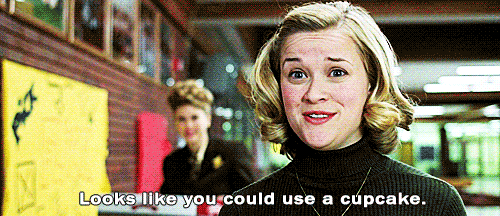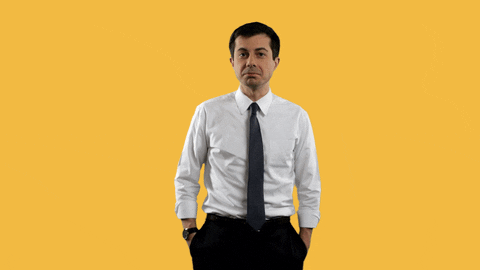Death panels. Harry and Louise. Lyin’ Ted. Crooked Hillary. Tricky Dick. Washington insider. The Dean Scream.
There’s no shortage of insults, mudslinging and distortions in politics. And no matter how often candidates swear they’ll run a positive, issues-oriented campaign, negativity seeps in.
Why? Because our brains respond to it.
UC Davis psychology professor Alison Ledgerwood studies framing effects, or how people process information based on how it’s presented to them.
Say a candidate proposes a new jobs policy — Jobs Policy A. You don’t know much about it. But one of the first things you hear is that it will save 60 percent of manufacturing jobs. Your friend, meanwhile, is told that 40 percent of jobs will be lost.
It’s the same policy, with the same results, so all else being equal, you and your friend should have a similar outlook on it, right? What research actually finds is that you are more likely to respond favorably, because the information about it has been framed in terms of success. Whereas your friend, who has been thinking of the policy in terms of failure, is not a fan.
The power of a negative frame
A series of “Harry and Louise” health care advertisements and responses to them. The “Harry and Louise” campaign is often credited with helping to sink then-President Clinton's 1993-94 health care plan.
Ledgerwood and her colleagues have also found that a negative frame is much more persistent, or “stickier,” than a positive one. If you come at an issue negatively, but are later reminded of the policy's positive aspects, you will still think it's a bust. And if you start out thinking favorably about the policy, but are reminded of its downsides, your positive perception will be swept away and a negative one will take its place.
Once we think the proverbial glass is half empty, it’s hard to remember that it’s also half full.
In other words, our brains are hard-wired to seek out and remember negative information. That fact isn’t lost on politicians and political parties.
A few examples from over the years:
- “Tricky Dick,” a nickname associated with Richard Nixon that emerged during his 1950 campaign for Senate, dogged his entire political career, from his presidential faceoff with John Kennedy to Watergate.
- The phrase “death panels” almost ground the Affordable Care Act to a halt.
- An attempt to undermine John Kerry’s 2004 presidential campaign by impugning his record in Vietnam was so effective — and deceptive — that the term “swiftboating” now refers to any untrue negative political attack.
- And the current president has cultivated his own negative campaigning style, relentlessly portraying his opponents with repetitive negative nicknames: Crooked Hillary. Low Energy Jeb. Lyin’ Ted. Fake News.
The beauty of negative attacks — from a campaign standpoint — is that they influence everyone. Even a candidate’s supporters will be affected by negative attacks, Ledgerwood and her collaborators have found. Once a negative idea has been planted, it’s very hard to shake.
So, it’s reasonable to expect that candidates in upcoming debates will be ready with negative frames — frames they hope will stick to their opponents, and our brains. But we don’t have to be held hostage by the constant negativity.

Here are a few different ways Ledgerwood and her team have studied to shake negativity and embrace a positive frame.
Rename the issue
One way is to rename and relaunch the problem. Take Jobs Policy A that eventually everyone soured on in the first example. When those same people were presented with Job Policy B (in substance, the same policy) from a positive frame, they were suddenly more open-minded.
Just the addition of a new name, according to Ledgerwood, “frees people from their initial negative conceptualization of it and allows them to adopt this new positive view.”
Propose (and be) shiny and new

Another way to combat negativity is to offer voters a new, unfamiliar situation with the possibility of a major gain. Not just trying to maintain the status quo — “you were expecting a big recession and this person might prevent it” — but a brand new, shiny thing you didn’t have before — like putting a man on the moon.
Part of the problem in politics, Ledgerwood says, is that most of the political domain is about losses and preventing pain.
Ideas that capture the imagination as huge gains, free from negative associations — like Ronald Reagan's “Morning in America” — are hard to find. We often think of climate change, for example, in terms of saving the Earth we have, and avoiding loss. Ledgerwood suggests a better way to think of it might be to frame it as an opportunity “to become the No. 1 world leader in climate innovation.”
Ledgerwood cites the allure of the “mystery box,” that game show standby (and “Family Guy” classic) that gets people to pass up more obvious possible gains for the tantalizing prospect of something even better.
“A boat's a boat. But the mystery box could be anything. It could even be a boat!”
“When there’s a possible positive out there in the environment, but we don’t know exactly what it is and we don’t have much experience with it, we might get stuck in terms of thinking about them because of this excitement that we feel about an unknown, possible, super big positive.” In this instance, she says, those positive frames seem to be even stickier than negative frames.
That goes for candidates, too. A candidate people know less about, who can introduce themselves on their own terms, has an opportunity establish positive frames about their life and career that those with baggage don’t. Candidates that are shiny and new (think Pete Buttigieg, Barack Obama, or Bernie Sanders and Donald Trump in 2016) are unique in that way.
Repeat the message
When you do find effective frames (positive for yourself, negative for others), stick to them, Ledgerwood says. Focused frames are most powerful. Obama faced a number of negative frames in his time as a candidate, but he had a few things going for him. Aside from being able to dictate his own frames, because voters came at him fresh, Obama was able to tie his ideas back to one positive theme, articulated over and over: Hope and change. Hope and change. It was cohesive, shiny and new, and big. And that’s a recipe for helping voters take a leap they might not otherwise have.
No one can say who will win the next election, much less this week’s candidate debate. But keep a look out for the candidates who are best at packaging and sticking to their frames — we may be seeing them in the White House in 2021.
🧠 Ledgerwood's collaborators on the research described in this article include Jehan Sparks, Andre Wang, Melisse Liwag and Amber Boydstun. To learn more about the team behind this research and what they're working on now, visit www.alisonledgerwood.com/negativity-and-positivity-bias.html.
💡 The research highlighted in this article was supported in part by the National Science Foundation. Join UC in asking Congress to protect research funding.

